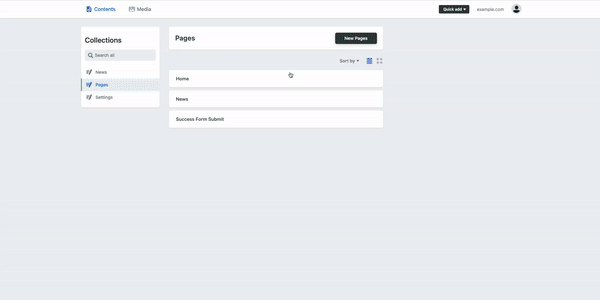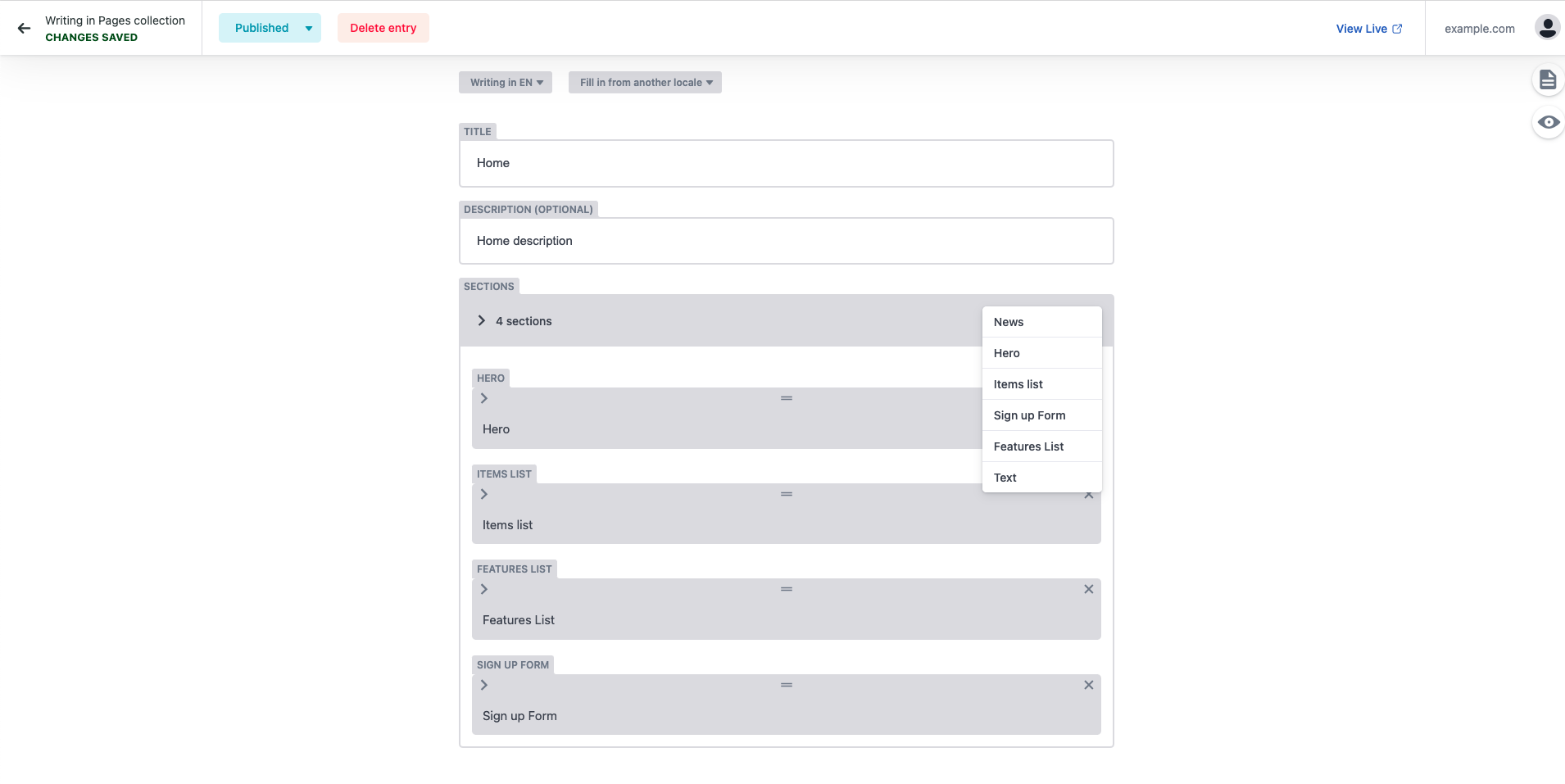Building a website is a crucial step toward establishing your online presence and attracting customers. However, the question of website costs often looms large, and finding an affordable yet flexible solution can be a daunting task. We're here to demystify the world of MVP website development costs and present a case of Moqod that could be an interesting solution for startups with limited budgets when creating a Minimum Viable Product (MVP).
Imagine this scenario: you have a groundbreaking idea and a small budget, but you need a website that showcases your product or service while offering the flexibility to grow. In the world of website development, costs can quickly spiral out of control. Domain registration and hosting fees alone can eat up a significant portion of your budget. Add to that the expenses of engaging designers, developers, and layout specialists, and the financial burden can become overwhelming. However, with Decap CMS + Netlify Hosting, we could transform this cost structure.

By leveraging a "constructor" approach, you gain access to a vast array of pre-designed blocks that can be seamlessly combined to create your MVP website, saving you both time and money.
In the following sections, we will delve deeper into the factors that contribute to website costs, highlighting the typical components and expenses involved in the development process. We will then introduce you to the Decap CMS + Netlify Hosting solution, showcasing its advantages and demonstrating how it enables startups with limited budgets to create high-quality MVP websites that capture attention and drive results.
Maximizing Efficiency and Minimizing Costs: Proven Strategies for Website Development
Let's consider the current minimum expense of website development:
- $10 — domain name,
- $120 — hosting for 1-2 years
- $500 — design
- $100 — layout
- $200 — site setup
- $300 — ready-made solution or paid plugins.
Of course, the ability to save money doesn't end there. While cost-cutting can be achieved at any stage of the process, it's often the time spent searching for solutions, freelancers, or self-configuration where significant savings can be found. By streamlining the website development process, we not only reduce costs but also save valuable time and resources.
We found a solution that does not require hosting and site setup costs. And if you take a ready-made design, then the cost is close to $160 per site. This includes essential features like multilingual support, an intuitive admin panel for content management, and robust data protection with a fault tolerance of 99%. Not to mention, a blazing-fast site loading speed of just 81 ms (TTFB) ensures optimal user experience.
Sounds tempting, doesn't it? But how is all of this possible? The secret lies in leveraging a comprehensive CMS solution that eliminates the need for costly hosting and site setup expenses. This alternative approach not only slashes costs but also ensures that your website meets the highest standards of functionality, security, and speed.
Exploring the Decap CMS + Netlify Hosting Solution
Decap CMS + Netlify Hosting solution offers an alternative, cost-effective approach to website development. Let's explore the features and advantages of using Decap CMS, discuss its suitability for specific tasks and niche markets, and highlight the benefits of Netlify Hosting.

Decap CMS: Features and Advantages
Decap CMS is a powerful content management system that sets itself apart from traditional platforms like WordPress. Unlike the thousands of plugins available for other CMS options, Decap CMS follows a different philosophy - offering a curated collection of pre-designed blocks that can be easily integrated into a website. These blocks act as building components, allowing you to create a unique website without the need for extensive coding or design skills.
The advantages of using Decap CMS are manifold. Firstly, its simple interface enables even non-technical users to manage and update their website effortlessly. With a simple drag-and-drop functionality, you can arrange and customize the blocks according to your vision. This streamlined process significantly reduces the time and resources required for website creation, making it ideal for startups seeking to launch their MVP quickly.
Decap CMS is particularly well-suited for specific tasks and caters to niche markets where personalized website functionality is essential. Whether you are a service-based business, an e-commerce startup, or an informational site seeking a unique presentation, Decap CMS offers the flexibility to tailor your website to your specific requirements.
Service-oriented businesses can utilize the CMS to build interactive booking systems or appointment scheduling features, enhancing user experience and streamlining customer interactions. Additionally, Decap CMS is perfect for informational websites that require dynamic content management, such as blogs, news portals, or event listings.

Benefits of Netlify Hosting: Free Usage and Scalability Options
Netlify Hosting further enhances the cost-effectiveness of the Decap CMS solution. One of its key advantages is the option for free usage, which is a significant boon for startups and businesses on a limited budget. With the free tier, you can host your website without incurring hosting expenses initially, allowing you to focus your resources on other critical aspects of your venture.
Moreover, as your startup gains traction and website traffic increases, Netlify Hosting offers seamless scalability options. You can easily upgrade to premium plans that provide higher performance, advanced features, and increased resource allocations. This scalability ensures that your website maintains optimal performance even as it grows, catering to a larger audience and accommodating your business's expanding needs.
Comparing other popular CMS platforms like Statamic, Webflow, and WordPress
When it comes to website development, there are several popular CMS platforms available in the market, each with its own set of advantages and drawbacks. Let's briefly compare these alternatives, namely Statamic, Webflow, and WordPress, and shed light on the limitations they present in terms of costs, performance, and security.
Comparison of alternative CMS platforms
a) Statamic: Statamic is a CMS platform known for its server-side rendering capabilities and flexibility. However, it comes with a higher cost compared to other options. Server costs and statics costs can quickly add up, making it less suitable for startups with limited budgets. Additionally, the development complexity involved in utilizing Statamic may require hiring specialized developers, further increasing the overall expenses.
b) Webflow: Webflow is a visual website builder that allows users to create websites without coding. While it offers a user-friendly interface, it falls short in terms of website speed and performance. TTFB (Time to First Byte) and First Contentful Paint metrics tend to be slower, which can adversely affect user experience. Moreover, Webflow's subscription-based pricing model adds to the long-term costs of website maintenance.
c) WordPress: WordPress is a widely popular CMS platform known for its extensive plugin ecosystem and vast customization options. However, it has its fair share of drawbacks. The speed and stability of WordPress websites can be compromised due to the heavy reliance on plugins, frequent updates, and vulnerabilities. Additionally, hosting costs, along with the need for ongoing maintenance and security measures, contribute to the overall expenses.
Drawbacks of Alternatives
While these CMS platforms have their merits, they also come with inherent drawbacks that can impact budget-conscious startups and businesses seeking optimal performance and security.
a) Higher Costs: Statamic's server and statics costs, Webflow's subscription fees, and WordPress's hosting expenses all contribute to higher overall costs compared to the Decap CMS + Netlify Hosting solution. For startups with limited budgets, these costs can become significant barriers to entry and hinder their ability to invest in other critical areas of their business.
b) Performance Limitations: Webflow's slower TTFB and First Contentful Paint metrics can result in a suboptimal user experience. Similarly, WordPress's reliance on plugins can lead to slower loading times and reduced stability. These limitations can negatively impact visitor engagement, conversion rates, and overall website success.
c) Security Concerns: With WordPress's popularity, it becomes an attractive target for hackers, making security vulnerabilities a constant concern. Frequent updates and the need for additional security measures can be time-consuming and costly. Conversely, the Decap CMS + Netlify Hosting solution offers robust data protection and fault tolerance, providing peace of mind to businesses and their customers.
Conclusion
By harnessing the power of Decap CMS and capitalizing on the scalability and cost-saving options provided by Netlify Hosting, startups can develop high-quality websites that cater to their specific requirements without straining their finances.
While it's important to note that this solution isn't a magical fix, it serves as a valuable tool in the realm of corporate and informational websites. In a landscape where SEO optimization often demands substantial investments, Decap CMS + Netlify Hosting presents a cost-effective alternative that aids in achieving clients' ultimate objectives. After all, websites are built to solve problems, whether it involves selling products or promoting services.
What's more, the financial and time barriers to entry may be lower than initially perceived without compromising the quality of the end result. It all comes down to a clear understanding of your goals and the strategies needed to accomplish them. With Decap CMS + Netlify Hosting, startups can navigate these challenges more efficiently, ensuring their online presence thrives while keeping costs in check.






